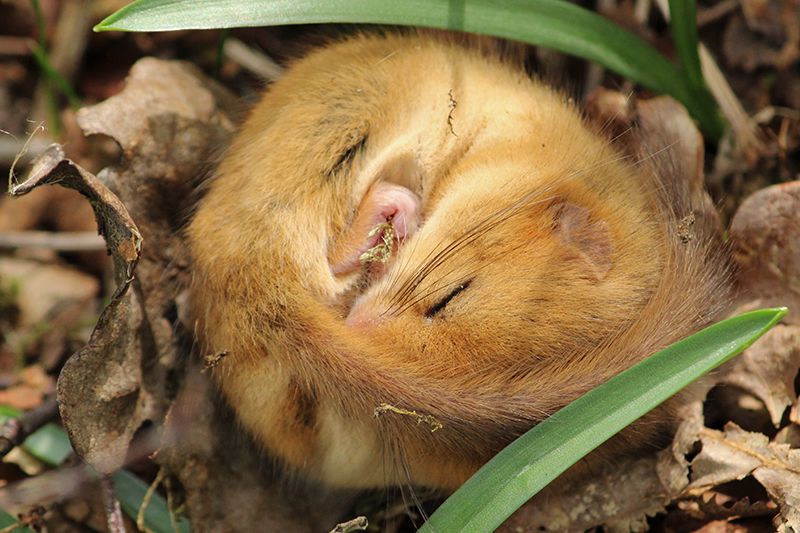There were times this spring when it seemed not much was going on. One day blended into another and lockdown began to feel like a period of torpor or, perhaps even, hibernation. For the greater good, many of us had our movements restricted, and our favourite spots felt quite distant. As one of the fortunate ones who has had a limited role at Fingle Woods in Devon during lockdown, I’d like to share some progress on our dormouse project, jointly funded by PTES and National Lottery Heritage Fund.
Armed with a bottle of disinfectant spray and a risk assessment, I continued with the dormouse footprint study in Fingle Woods over the past few months. With good results from last autumn, I set up the spring survey in anticipation as our lockdown was announced. It coincided with the first dormice becoming active after their own annual hibernation lockdown ended. In April, footprints started to appear. These early movers would spend the day in torpor and become active at night, foraging for food. Gradually, more dormice became active as the season progressed, with ever more footprints at the second inspection in May. There was a bit more activity around the areas where hibernation conditions are good. Availability of nest building material and a steady level of humidity are both important factors, though dormice can be quite adaptable when required. It looked as though they fared well through the winter and was great to see them back in action.
Another interesting aspect of this project is that we are providing the test paper samples for a researcher at University College London. She’ll look for evidence of DNA, left in the subtlest traces by animals in the wild. It’s exciting to be part of this cutting-edge project. Handled with great care to avoid contamination, each paper showing dormouse activity was carefully placed in envelopes and sent to the lab.
So, we’re beginning to get a set of results that will tell the story of these dormice and the habitat restoration we’re carrying out at Fingle Woods over a long period of time. This year had a good start and we hope to see evidence of increasing activity. As autumn progresses we hope to find evidence of tiny feet too.
Written by Matt Parkins
Learn more about Matt’s project by visiting his project page:



